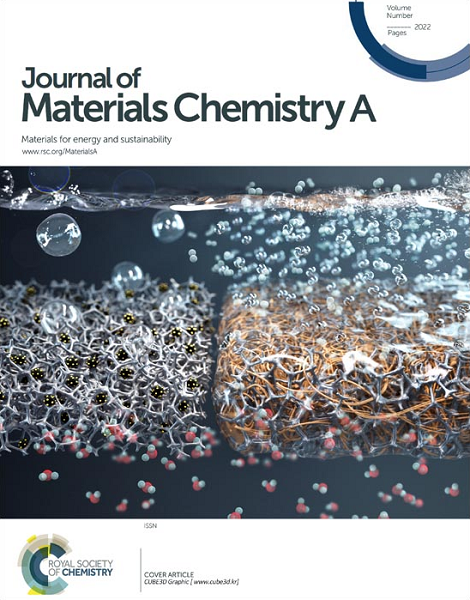富锂Li2NiO3阴极的电荷补偿机制和氧二聚化
IF 9.5
2区 材料科学
Q1 CHEMISTRY, PHYSICAL
引用次数: 0
摘要
与标准层状阴极相比,富锂阴极的容量更高,因此在锂离子电池中越来越受欢迎。然而,这些材料的氧化还原机制仍然不清楚,实验中观察到的额外容量的来源也不清楚。我们研究了最近合成的富锂阴极Li2NiO3中难以捉摸的电荷补偿机制及其对潜在氧二聚体形成的影响。利用最先进的从头算动力学平均场理论,我们发现Li2NiO3的过剩容量来自Ni和O的氧化还原组合,而不像其层状对应的LiNiO2,其中O氧化还原占主导地位。此外,我们首次通过电子定位函数图证明了O二聚体的形成,并将这种形成归因于O的较高氧化态,即使在原始材料中也是如此。最后,我们发现锂离子迁移到电荷末端的层间四面体位置可能不太可能,因为末端构型具有更高的能量和O二聚化引起的母体结构的稳定。这种微观的理解有助于更好地设计出具有更高容量和最小降解的富锂高镍含量阴极。本文章由计算机程序翻译,如有差异,请以英文原文为准。
Demystifying charge-compensation mechanisms and Oxygen dimerization in Li-rich Li2NiO3 cathodes
Li-rich cathodes are gaining popularity for Li-ion batteries due to their higher capacity compared to standard layered cathodes. However, the redox mechanisms in these materials are still not clear, nor is the origin of the extra capacity observed experimentally. We investigate the elusive charge-compensation mechanisms and their impact on potential oxygen-dimer formation in a recently synthesised Li-rich cathode, Li2NiO3. Using state-of-the-art ab initio dynamical mean-field theory, we show that the excess capacity in Li2NiO3 comes from a combined Ni and O redox, unlike its layered counterpart LiNiO2, where O redox predominates. Moreover, we demonstrate O dimer formation via a plot of the electron localisation function for the first time, and attribute this formation to the higher oxidation state of O, even in the pristine material. Finally, we show that Li migration to the interlayer tetrahedral sites at the end of charge is potentially unlikely due to the end configuration being higher in energy and the stabilisation of the parent structure caused by O dimerization. This microscopic understanding leads to better design of Li-rich high Ni-content cathodes with higher capacity and minimal degradation.
求助全文
通过发布文献求助,成功后即可免费获取论文全文。
去求助
来源期刊

Journal of Materials Chemistry A
CHEMISTRY, PHYSICAL-ENERGY & FUELS
CiteScore
19.50
自引率
5.00%
发文量
1892
审稿时长
1.5 months
期刊介绍:
The Journal of Materials Chemistry A, B & C covers a wide range of high-quality studies in the field of materials chemistry, with each section focusing on specific applications of the materials studied. Journal of Materials Chemistry A emphasizes applications in energy and sustainability, including topics such as artificial photosynthesis, batteries, and fuel cells. Journal of Materials Chemistry B focuses on applications in biology and medicine, while Journal of Materials Chemistry C covers applications in optical, magnetic, and electronic devices. Example topic areas within the scope of Journal of Materials Chemistry A include catalysis, green/sustainable materials, sensors, and water treatment, among others.
 求助内容:
求助内容: 应助结果提醒方式:
应助结果提醒方式:


